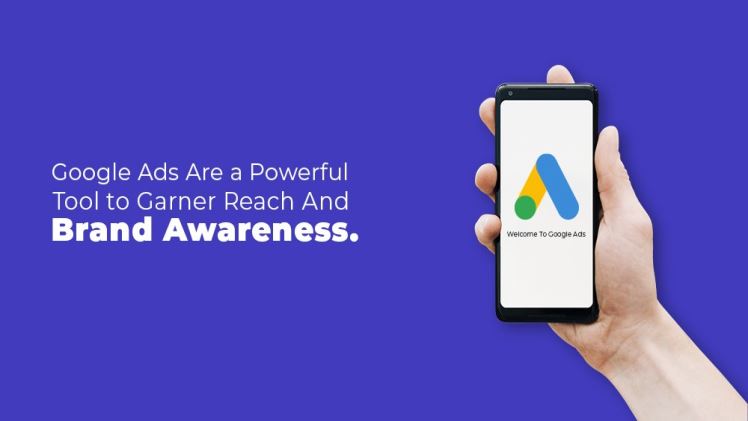Google Ads for Lead Generation: Strategies for Capturing Contacts

Lead generation is a fundamental goal for businesses of all sizes in the world of digital marketing. Leads are potential customers who have expressed an interest in your products or services, and obtaining their contact information is the first step in converting them into paying customers. Google Ads, one of the most powerful online advertising platforms, provides a number of lead generation strategies. In this blog post, we will look at effective strategies and best practices for capturing valuable contacts for your business using Google Ads.
Understanding Lead Generation’s Importance
Before we get into the strategies, let’s take a look at why lead generation is so important for businesses:
- Creates a Customer Base: Leads are people who have expressed an interest in your products or services. You can nurture these prospects and eventually convert them into loyal customers by capturing their contact information.
- Increases Sales and Revenue: Good lead generation can have a direct impact on your bottom line. Converting leads into customers means more sales and revenue for your company.
- Improves marketing ROI: Targeted lead generation campaigns can yield a higher return on investment (ROI). Your advertising budget is being spent on people who are more likely to convert, making your marketing efforts more cost-effective.
- Fuels Growth: Leads provide a steady stream of potential customers, which is critical for your company’s growth and sustainability. A healthy sales pipeline is ensured by consistent lead generation.
Lead Generation with Google Ads
Google Ads has a variety of features and tools that make it a versatile lead generation platform. Here are some strategies you can use to effectively capture contacts:
- Use Ad Extensions
Ad extensions are informational or interactive elements that can be added to your ads. Ad extensions can improve the engagement of your ads and encourage users to take action. The following ad extensions are particularly useful for lead generation:
- Callout Extensions: Emphasize key benefits or differentiating features of your product or service.
- Site Link Extensions: These are links that take users to specific pages on your website, such as contact forms or landing pages.
- Call Extensions: Allow users to call your company directly from the advertisement, which is especially useful for mobile users.
- Message Extensions: Allow users to send you a text message directly from the ad, giving them an easy way to contact you.
You can make it easier for potential leads to engage with your company by strategically using these extensions.
- Design Captivating Landing Pages
Users should be directed to a landing page that is highly relevant to the ad’s messaging when they click on your ad. A clear and concise call-to-action (CTA) on your landing page should encourage visitors to take the desired action, such as filling out a contact form or downloading a lead magnet (e.g., an eBook or whitepaper). Here are some best practices for landing pages:
- To prevent users from bouncing, ensure quick loading times.
- Maintain a clean design that is focused on the CTA.
- Make use of persuading and benefit-driven copy.
- Include trust indicators like testimonials and security badges.
- Make the contact form or lead capture mechanism easy to use and accessible.
- Keyword Research
Keyword research and targeting are critical for reaching the intended audience. Determine keywords that are relevant to your company and have a high probability of attracting potential leads. To fine-tune your targeting, use keyword match types (broad match, phrase match, exact match). Long-tail keywords should be considered because they often indicate more specific search intent and can be less competitive.
- Ad Groups and Segmentation
Organize your Google Ads campaigns into ad groups that are narrowly focused. Each ad group should be tailored to a specific demographic or set of keywords. This allows you to create highly targeted ad copy and landing pages for each group, increasing your chances of capturing leads. Effective segmentation can also assist you in tracking the effectiveness of various lead generation strategies.
- Make use of Conversion Tracking
Conversion tracking tools are available through Google Ads, allowing you to assess the success of your lead generation campaigns. You can track how many users complete desired actions on your website, such as submitting a contact form or requesting more information, by enabling conversion tracking. This information is invaluable for optimizing your campaigns and effectively allocating your budget.
- Remarketing
Remarketing is an effective strategy for re-engaging with users who have previously interacted with your website or advertisements. Remarketing lists can be created for specific actions, such as users who visited your contact page but did not submit a form. Then, as these users browse other websites or use Google services, you can show them targeted ads. Remarketing can help bring back potential leads who did not convert the first time.
- Split Testing
Improving lead generation performance requires ongoing optimization. Conduct A/B tests to test various ad copy, landing page elements, and CTA buttons. Test headlines, ad extensions, images, and form fields to see what resonates the most with your audience and leads to higher conversion rates.
- Optimisation For Mobile Devices
With the increased use of mobile devices, it’s critical to ensure that your lead generation campaigns are mobile-friendly. Mobile-responsive landing pages and mobile-specific ad copy can improve the user experience and increase mobile traffic conversions.
- Budget Distribution
Prioritize lead generation campaigns by allocating your budget strategically. Monitor each campaign’s performance and adjust your budget based on which campaigns generate the most leads at the lowest cost per lead (CPL). It is critical to strike a balance between lead quantity and quality.
Measuring Lead Generation Success
Tracking key performance indicators (KPIs) is critical for assessing the success of your lead generation efforts in Google Ads. Here are some key metrics to keep an eye on:
- Conversion Rate: The percentage of users who perform the desired action (e.g., filling out a contact form) after clicking on your ad.
- Cost Per Lead (CPL): The cost of acquiring each lead. Divide the total ad spend by the number of leads generated to calculate CPL.
- CTR (Click-Through Rate): The proportion of users who click on your ad after seeing it. A high CTR indicates that your advertisement is both compelling and relevant.
- Quality Score: Google’s evaluation of the quality and relevance of your ads, keywords, and landing pages. A higher Quality Score may result in lower costs and better ad placement.
- Return on Investment (ROI): Calculate the ROI by comparing the revenue generated by leads to the advertising costs. A positive ROI indicates that the lead generation campaign was profitable.
- Lead Funnel Analysis: Monitor how leads progress through your sales funnel. Determine bottlenecks and opportunities for improvement in the lead nurturing process.
Conclusion
When used strategically, Google Ads is a powerful platform for lead generation. You can capture valuable contacts, nurture leads, and ultimately convert them into loyal customers by implementing the strategies outlined in this blog post and continuously optimizing your campaigns. Keep in mind that lead generation is an ongoing process, and that testing and refining are critical for long-term success. You’ll discover what works best for your business as you fine-tune your Google Ads campaigns, and your lead generation efforts will continue to improve. For more insights and expert guidance on optimizing your lead generation with Google Ads, find more info about RocketStatus today.





